
If you live around Dwarka Sector 9, grocery shopping is woven into your week whether you like it or not. Some days you’ll find yourself at the sabzi mandi near Sector 9 metro station, haggling over potatoes with a vendor who insists, “Didi, yeh rate toh mandi ka hai.” Other days you’re ducking into a kirana shop under your society because you forgot to buy salt or oil. And then there comes those moments when you’re standing in the long ques of supermarket aisle, staring and wondering at ten different kinds of rice and saying why basmati suddenly costs more than last month. That’s life in Sector 9. Stores are everywhere – big, small, fancy, simple. The real challenge isn’t finding groceries, it’s figuring out which shop actually fits your needs.
Everyday Problems Shoppers Face (And How to Solve Them)
Anyone who shops here regularly will recognize these issues:
Veggies that wilt in hours
Vendors sometimes sprinkle water on greens to make them look fresh, but by evening, palak and methi are half-dead.
👉 Fix: Buy in the morning, especially from the mandi behind the metro station. The trucks unload fresh stock at sunrise.
Bills that leave you stunned
Supermarkets tempt you with polished aisles, but by the time you check out, your bill is ₹500 higher than expected.
👉 Fix: Break your shopping. Get your staples like rice, atta, and dal from the wholesale shops; keep these supermarkets for sauces, snacks, and other imported needs.
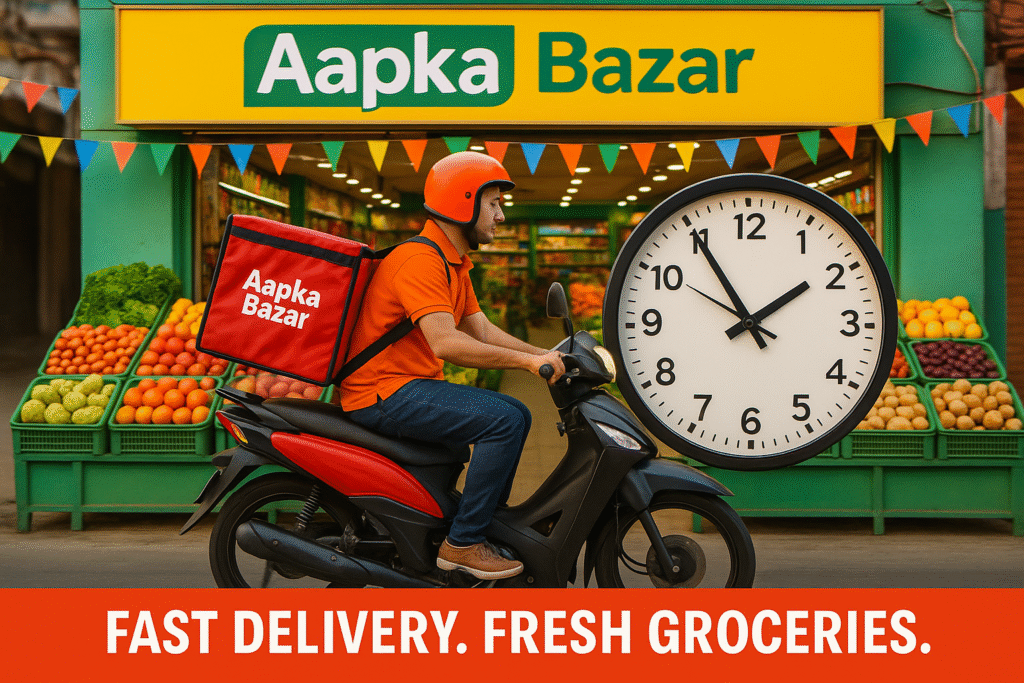
Confusing organic labels
Every other packet says “organic,” but not all are genuine. Some shops slap on the label to justify higher prices.
👉 Fix: Look for certification marks. Genuine organic shops most of the times display sourcing boards or partnerships with farmers.
Late-night emergencies
No milk for morning tea, or guests drop in at 10 pm. Most shops are shut, leaving you helpless.
👉 Fix: Keep at least one 24/7 store on your list. Yes, it’s costlier after midnight, but it saves your sanity.
Choice overload
Kirana, supermarket, organic outlet, wholesale… too many options can actually be stressful.
👉 Fix: Decide your goal before stepping out: do you want freshness, savings, or convenience? That one answer tells you where to shop.
Fresh Produce in Sector 9
For most households, sabzi and fruits are the heart of grocery shopping. And Sector 9 is full of options:
Local mandis → The sabzi mandi behind the metro is a hotspot. Early morning, you all see vendors unloading trays of tomatoes, onions, and leafy greens. And By 8 am, aunties are already in rows for bargaining, and the smelling the coriander fills the air.
Street vendors → They push carts through societies, ringing a bell to announce their arrival. Handy for last-minute okra or cucumbers, but quality depends on their day’s supply.
Neighbourhood kiranas → Most stock both Indian fruits and sometimes apples, kiwis, or pears in neat plastic crates. Prices are a bit higher but you get reliability.
Supermarkets → Clean displays and packaged options. Expensive, yes, but great if you prefer everything washed and sorted.
💡 Tiny tip: Never buy cucumbers in the evening— as they turn rubbery fast. Also, if you’re buying papaya, first ask the vendor to cut a tiny piece and check the taste. That’s how locals should check sweetness without guessing.
The Organic Wave in Sector 9
Organic shops have sprouted everywhere. You’ll spot them with their earthy wooden shelves, selling pesticide-free grains, pulses, cold-pressed oils, and snacks made from millets.
But here’s the truth: organic is pricey. A regular packet of rice might cost ₹60 a kilo, while organic rice is easily ₹108. That’s why shoppers wait for seasonal discounts.
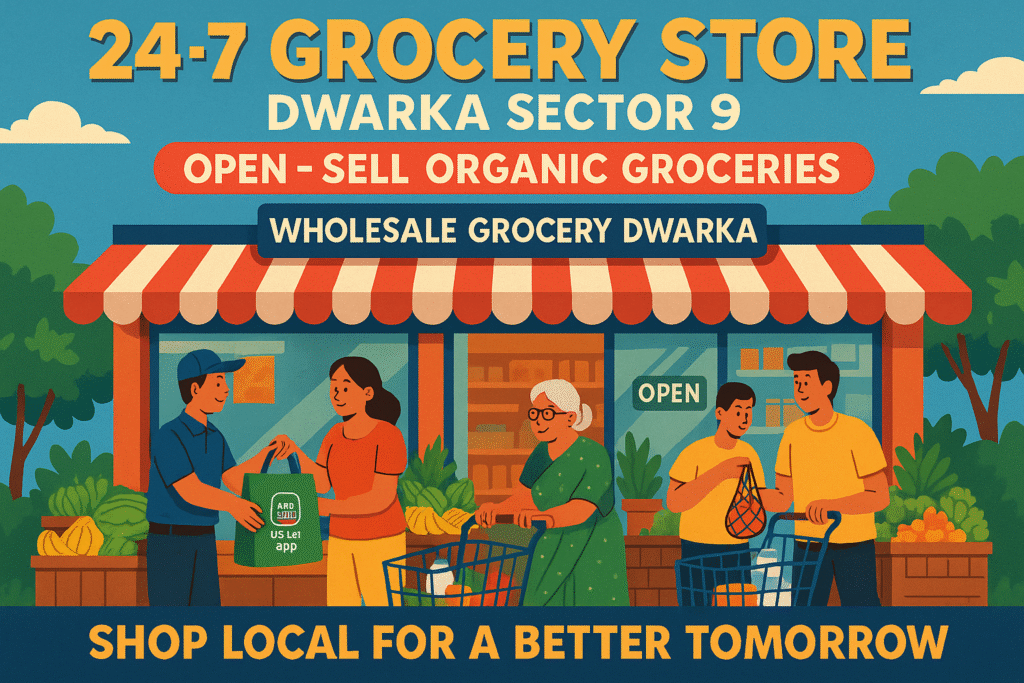
👉 Right now, Aap Ka Bazar is running festive offers, making organic products more pocket-friendly. Families who earlier hesitated are picking up everything from organic atta to jaggery.
Budget-Friendly Shopping Hacks For you
Not everyone wants fancy groceries. For many Sector 9 households, budgeting is key. Here’s what works:
Buy in bulk → A 25 kg sack of wheat from a wholesaler costs far less than buying in small packets.
Local brands over imported → Most local masalas taste just as good, at half the cost.
Weekly haats → The small haats that set up in nearby lanes often sell veggies ₹10-15 cheaper per kilo.
Price comparison → Don’t stay loyal to just one store. Even a ₹5 saving on dal adds up if you’re buying 5 kilos.
Many old-school kirana shops also offer “udhaar” (monthly credit) to regulars, which no supermarket will. It’s an unsaid trust system that still works here.
24/7 Stores: Midnight Saviours
Every family in Sector 9 has had that one night when milk runs out or guests demand cold drinks. That’s where 24/7 stores step in.
They keep essentials like bread, eggs, and Maggi noodles always stocked.
You’ll usually find them on main road corners or near metro exits.
Prices are slightly higher, but at odd hours, nobody minds paying extra.
💡 Local habit: Many residents keep the phone number of their nearest 24/7 store saved. A quick call confirms if an item is in stock before making the trip.
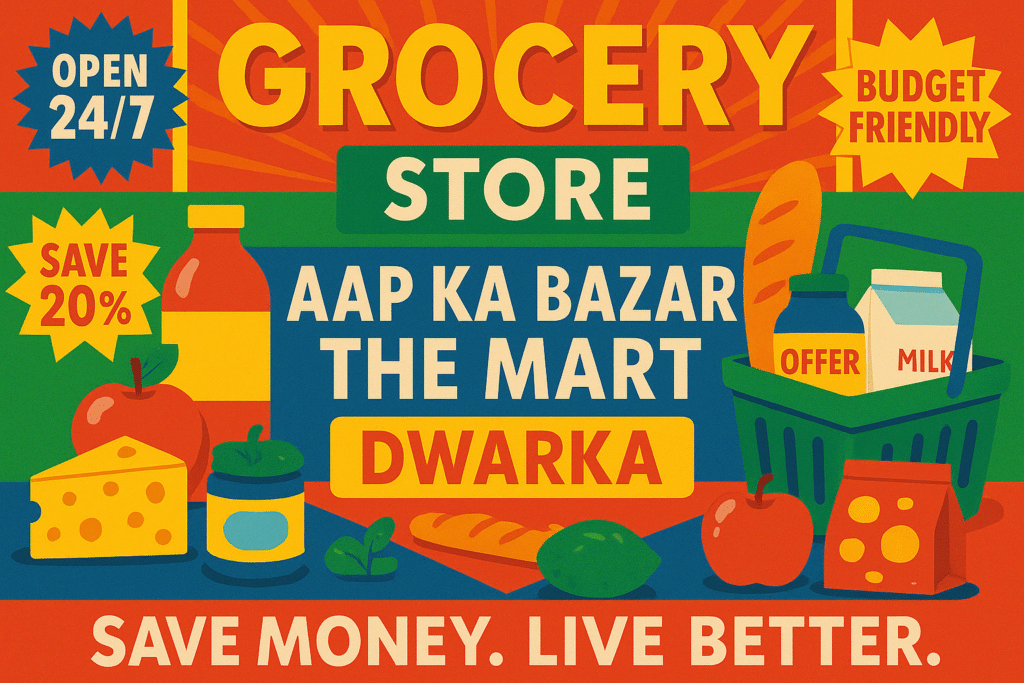
Make your Wholesale Shopping in Dwarka Sector 9 simple :
1 .If you’ve got a big family, run a PG, or just don’t like shopping every week, wholesale is the way to go.
2. Sacks of rice and atta are measured on giant scales, tied up, and loaded into autos.
3. Oil cans, sugar bags, and cleaning products are stacked floor-to-ceiling. Prices are 10–20% lower than supermarkets.
4. Some larger supermarkets, including Aap Ka Bazar, even dedicate sections to wholesale packs, blending the convenience of retail with wholesale savings.
Why People Love Aap Ka Bazar
Talk to locals and you’ll hear the same reasons:
Festive discounts → This festive season, Buyers are grabbing everything from basmati rice to organic snack at lower prices.
Providing All-in-one convenience → From Fresh produce, pulses, wholesale packs, and to even imported chocolates— only under one roof.
Consistency → Unlike some shops that run out of basics, Aap Ka Bazar rarely disappoints. Prices are steady, and stock is reliable.
That’s why many families treat it as their “main” store while still dipping into kiranas or mandis for smaller needs.
Local vs. Branded Stores – What Works Best?
The debate goes on:

Local kiranas → Close to home, personal service, sometimes even small freebies like coriander with veggies.
Branded supermarkets → Neat shelves, billing counters, and more choice—but you lose the personal touch.
Honestly, both plays important role. If you Need onions in a hurry? Kirana wins. Doing your monthly shopping? Supermarket is easier.
Quick Shopper’s Checklist
Before you step out, ask yourself:
Am I buying for the week or the month?
Do I want savings or convenience today?
Is freshness (mandi) more important than packaging (supermarket)?
Do I need organic options?
Should I plan for a late-night backup store?
This small checklist saves a lot of time and confusion.
Here I will end this here :
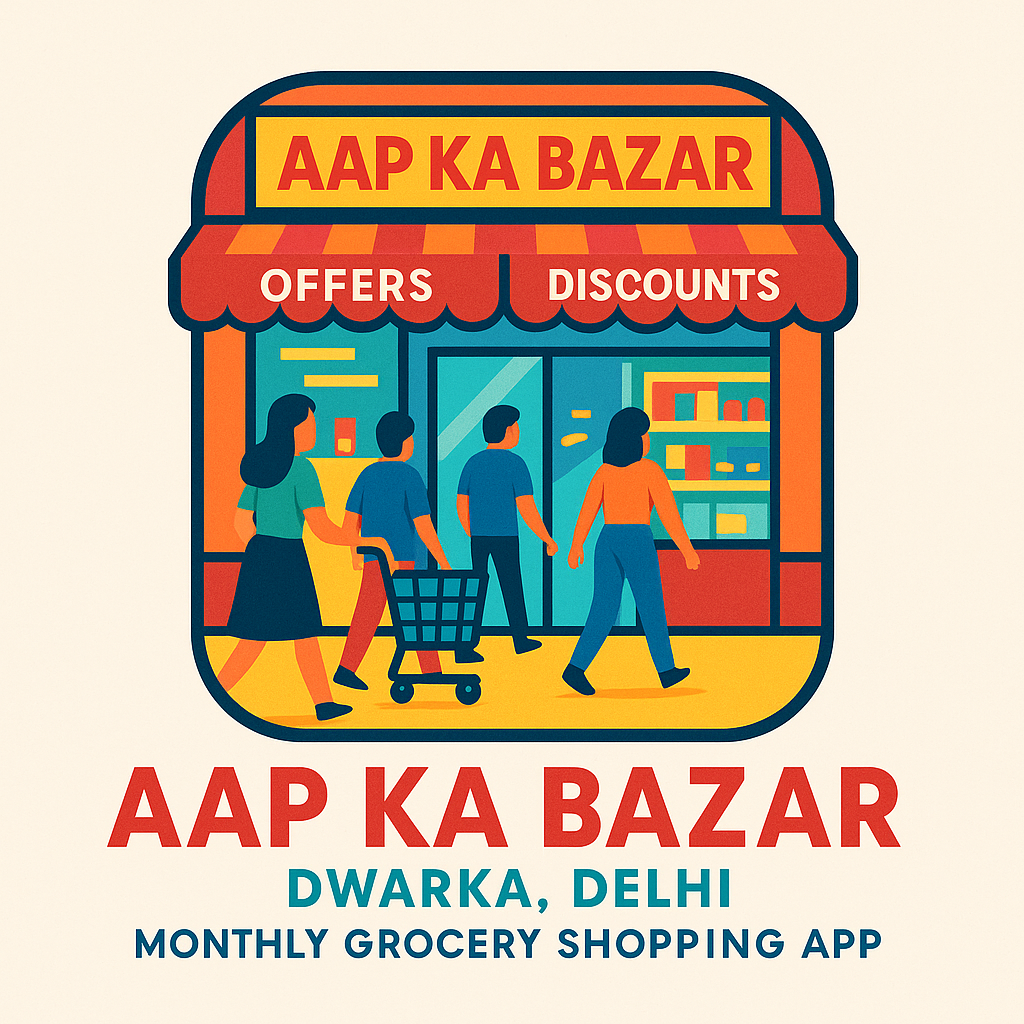
Grocery shopping in Dwarka Sector 9 isn’t just all about filling our bag. It’s also about knowing your options, choosing the right store for the right purpose, and making smart choices. From bargaining at the mandi at 7 am, to calling a 24/7 shop at midnight, from saving on bulk packs at wholesalers to enjoying festive offers at Aap Ka Bazar as on biscuits and cookies for gifting to your relatives and friends, this neighbourhood has something for every kind of shopper.
Once you know where to go for what, your grocery runs stop being frustrating and start feeling like little wins in your week.

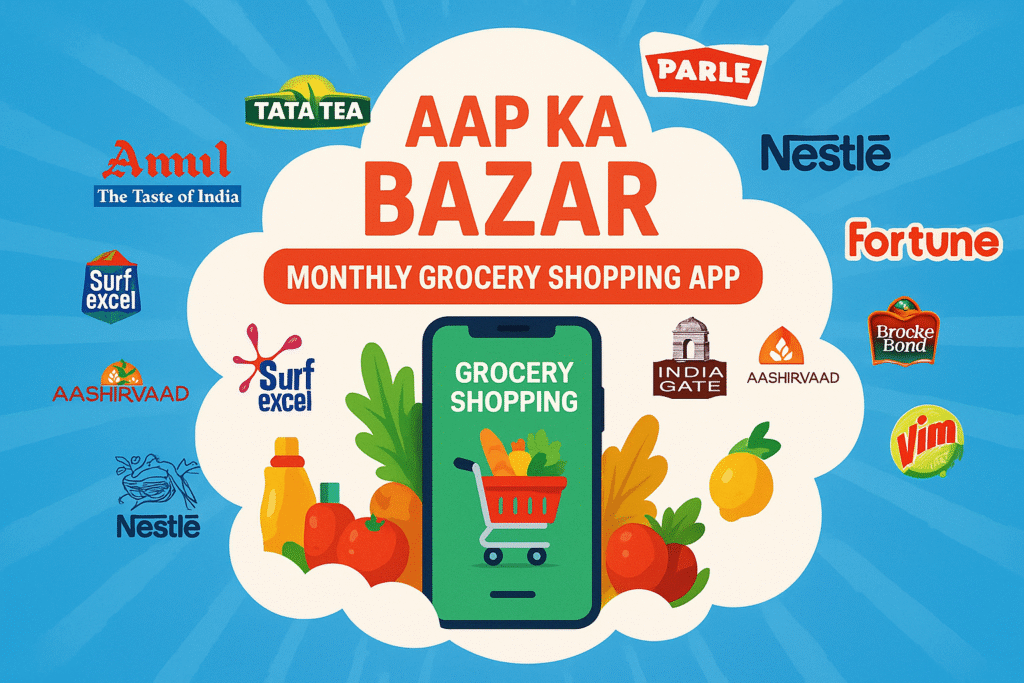


Pingback: Grocery Runs in Dwarka Sector 9: What Locals Actually Do and Why It Matters - Aap Ka Bazar - Blog